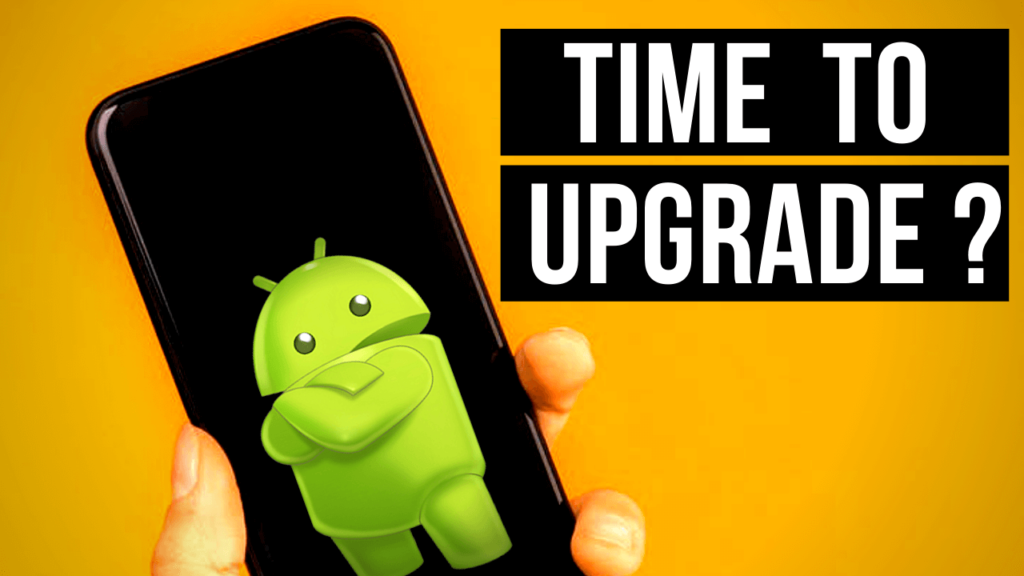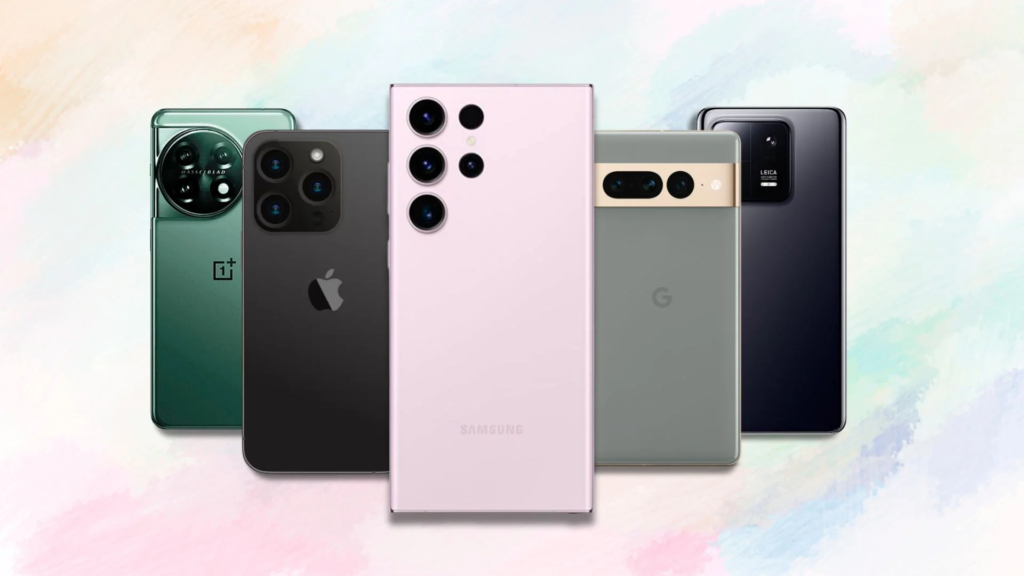- You have no items in your shopping cart
- Continue Shopping

Introduction
In a world where technology evolves at breakneck speed, smartphones stand as one of the most rapidly advancing products. With each passing year, manufacturers introduce upgraded models packed with innovative features, improved performance, and refined designs. For tech enthusiasts and everyday users alike, staying up-to-date with the latest upgrades is crucial to maximizing the smartphone experience. In this blog, we’ll dive into what makes upgraded phones worth the investment and explore some of the most anticipated features of 2024.
Why Upgrade? The Core Reasons for Upgraded Phones
Upgrading a smartphone is a significant decision, often motivated by several key factors. Understanding these reasons can help you determine whether it’s time to move on from your current device or stick with it a bit longer.
- Performance Improvements: As smartphone processors evolve, they become more efficient and powerful, allowing for faster performance, better multitasking, and more immersive gaming experiences. The latest chips often feature advanced AI capabilities, enabling smarter photography, voice recognition, and battery management.
- Enhanced Camera Systems: Photography enthusiasts and casual users alike benefit from the ongoing advancements in smartphone camera technology. Upgraded phones typically offer higher megapixels, improved zoom functionality, and better low-light performance. AI-driven features like scene recognition and automatic adjustments ensure that even amateur photographers can capture professional-quality images.
- Battery life and charging are critical aspects of any smartphone. Upgraded models often come with larger batteries, more efficient power management, and faster charging capabilities. Some of the latest phones support wireless charging and even reverse wireless charging, allowing you to charge other devices on the go.
- Software Updates and Security: Newer smartphones are more likely to receive ongoing software updates, ensuring compatibility with the latest apps and features. Additionally, upgraded phones offer better security through advanced biometric authentication methods like facial recognition and in-display fingerprint sensors.
- Display Technology: Over the years, the quality of smartphone displays has dramatically improved.Upgraded phones feature OLED or AMOLED screens with higher resolutions, better color accuracy, and faster refresh rates. Foldable displays and edge-to-edge designs are becoming more common, offering users a more immersive viewing experience.
- Future-Proofing: Technology is advancing rapidly, and upgrading your phone can help ensure that your device remains relevant and functional for the years to come. Staying ahead of the curve is essential, with features like 5G connectivity, AR/VR capabilities, and AI-driven personal assistants becoming standard.

Spotlight on 2024: The Most Anticipated Upgraded Phones
The year 2024 is shaping up to be an exciting one for smartphone enthusiasts. Several major brands are preparing to release upgraded versions of their flagship models, each offering unique features and enhancements.
- Apple iPhone 15 Pro Max: Apple’s iPhone series continues to be a trendsetter in the smartphone industry. We expect the A18 Bionic chip to power the iPhone 15 Pro Max, ensuring lightning-fast performance and enhanced energy efficiency. The camera system will see significant upgrades, including a periscope zoom lens that allows for unprecedented optical zoom capabilities. Additionally, Apple is rumored to introduce a new form of MagSafe technology, improving wireless charging speeds and accessory compatibility.
- Samsung Galaxy S24 Ultra: Samsung’s Galaxy S series is known for pushing the boundaries of smartphone technology. The Galaxy S24 Ultra will reportedly come with the Exynos 2400 processor or Snapdragon 8 Gen 3 (depending on the region), offering superior performance and efficiency. The camera setup will include a 200MP main sensor, allowing for incredibly detailed photos, even in low-light conditions. We also expect Samsung to enhance its under-display camera technology, ensuring a seamless full-screen experience.
- Google Pixel 9 XL: Google’s Pixel series has carved out a niche for itself with its focus on camera quality and pure Android experience. The Pixel 9 XL will feature the new Tensor G3 chip, designed to enhance AI capabilities, particularly in photography and personal assistant functions.
- OnePlus 12 Pro: OnePlus has built a reputation for delivering high-end features at a more affordable price point. The OnePlus 12 Pro will continue this tradition, offering a Snapdragon 8 Gen 3 processor, a fluid AMOLED display with a 144Hz refresh rate, and a Hasselblad-tuned camera system. Fast charging, a sleek design, and OxygenOS optimizations position the OnePlus 12 Pro as a formidable competitor in the flagship market.
- Xiaomi MI 14 Pro: Xiaomi’s MI series has been gaining popularity worldwide for its blend of premium features and competitive pricing. The Mi 14 Pro will likely feature the latest Snapdragon chipset, a quad-camera system with a 108MP primary sensor, and a 120Hz AMOLED display. Xiaomi is also focusing on sustainability, with rumors suggesting that the Mi 14 Pro will come with a more eco-friendly design and packaging.
- Sony Xperia 1 VI: Sony’s Xperia series continues to appeal to users who prioritize media consumption and content creation. The Xperia 1 VI will feature a 4K OLED display with a 120Hz refresh rate, making it ideal for watching movies and playing games. The camera system, developed in collaboration with Sony’s Alpha division, will offer professional-grade photography and videography tools. Sony also anticipates enhancing the phone’s audio capabilities, positioning it as a top choice for audiophiles.

Important considerations before upgrading
While the prospect of owning a new, upgraded phone is exciting, it’s important to consider several factors before making your purchase.
- Assess Your Current Device: Begin by evaluating your current phone’s condition. If it’s still performing well and meeting your needs, you might not need to upgrade immediately. However, if you’re experiencing issues like slow performance, poor battery life, or outdated software, an upgrade could be a worthwhile investment.
- Budget and Cost: Upgraded phones come with a price tag, often reflecting their advanced features and capabilities. Consider your budget and whether the new phone’s benefits justify the expense. If you’re on a tight budget, look for trade-in deals and financing options, or consider purchasing a slightly older model that still offers significant upgrades over your current phone.
- Carrier Compatibility and Plans: Ensure that the upgraded phone you’re interested in is compatible with your carrier’s network. Some features, like 5G connectivity, require specific network support. Additionally, review your carrier’s plans to see if upgrading your phone could give you an advantage over better data plans or services.
- Environmental Impact: The environmental impact of electronic waste is a growing concern. Before upgrading, consider the sustainability practices of the manufacturer. Many companies now offer recycling programs or trade-in options to minimize waste. You can also look into the phone’s materials and energy efficiency to ensure that your purchase aligns with your environmental values.
- Resale Value: If you frequently upgrade your phone, consider your current device’s resale value.Certain brands and models retain their value better than others, making it easier to offset the cost of a new phone. Platforms like eBay, Swappa, or your carrier’s trade-in program can provide a convenient way to sell your old phone.
- Future-proofing: Technology is evolving rapidly, and future-proofing is an important consideration when upgrading. Look for phones that offer features likely to become standard in the next few years, such as 5G, AR/VR capabilities, and enhanced AI integration. Investing in a phone with these features can help ensure that your device remains relevant and functional for longer.
The Future of Smartphone Upgrades
We expect several trends to shape the next generation of smartphone upgrades as we look to the future.
- Sustainability and Eco-Friendly Design: With increasing awareness of environmental issues, manufacturers are focusing on sustainability. Future upgrades may include phones made from recycled materials, more energy-efficient components, and eco-friendly packaging. Brands that prioritize sustainability are likely to gain favor with environmentally conscious consumers.
- AI and machine learning will continue to play a significant role in smartphone technology. Future upgrades will likely see even more advanced AI-driven features, from photography enhancements to personalized user experiences. AI will also contribute to better battery management, security, and overall performance.
- Augmented Reality (AR) and Virtual Reality (VR): We anticipate a greater integration of augmented reality (AR) and virtual reality (VR) into everyday smartphone use.Future upgrades may include enhanced AR/VR capabilities, making these experiences more immersive and accessible. This could revolutionize how we interact with our phones, from gaming and entertainment to shopping and education.
- 5G and Beyond: 5G technology is already changing how we use smartphones, offering faster data speeds and more reliable connections. As 5G networks expand, future smartphone upgrades will likely focus on optimizing these capabilities. Looking even further ahead, 6G technology is already in development, promising even faster speeds and new possibilities for mobile communication.
- Smartphones are increasingly serving as tools for health and wellness. Future upgrades may include more advanced health-monitoring features, such as improved heart rate sensors, stress level detection, and even mental health tracking. These features could integrate with other health-related apps and services, offering a more comprehensive approach to personal wellness.





